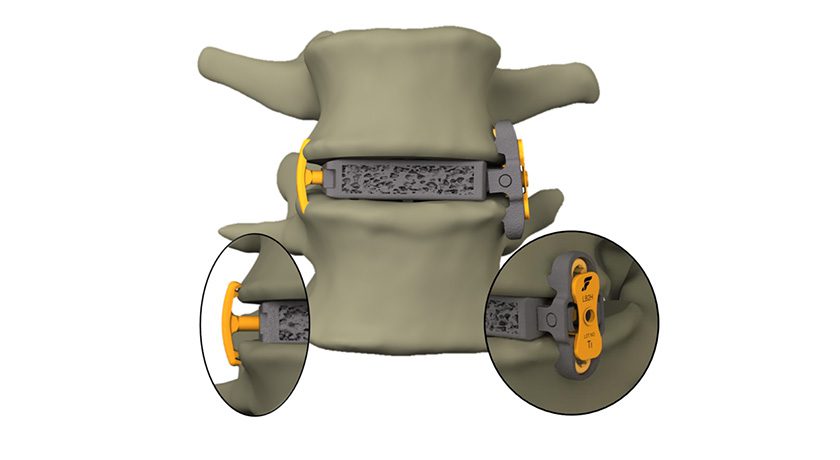President Barack Obama signed into law the “Defend Trade Secrets Act” (DTSA) in May. Why is this important? This new law federalizes trade secret law that previously had been left to the individual states to govern. One of the key aspects of the DTSA is that companies will now be allowed to file civil lawsuits in Federal court if their trade secrets have been stolen. Before the DTSA was passed, only criminal cases filed by Federal prosecutors were allowed in Federal court, while all private trade secret civil cases were required to be filed in state court.
The balance of this article will summarize several of the key aspects of the DTSA and the ways that they may impact your business moving forward. It should be noted that the DTSA became effective immediately (as of May 11, 2016), but will only apply to trade secret misappropriations that occur on or after the law’s effective date. In addition, the DTSA does not eliminate or pre-empt state law remedies. This new Federal law supplements the state pre-existing remedies. The DTSA essentially grants companies access to Federal court, no matter the amount of damages at issue or the lack of diversity. The new law’s intent is to provide uniformity across the mish-mash of state laws.
Historically, trade secret protection was governed by each individual state. This led to inconsistency in the enforcement of trade secrets from state to state. Over the years, the Uniform Trade Secrets Act (UTSA) was enacted in various forms by forty-eight states. (Only New York and Massachusetts have never adopted a version of the USTA.) Prior to the development of the USTA, state courts would make the determination of whether information qualified as a trade secret or not. The UTSA helped to bring some consistency to enforcing one’s trade secret by defining a trade secret as:
- information, including a formula, pattern, compilation, program, device, method, technique or process;
- that derives independent economic value, actual or potential, from not being generally known to or readily ascertainable through appropriate means by other persons who might obtain economic value from its disclosure or use; and
- that is the subject of efforts that are reasonable under the circumstances to maintain its secrecy.
Examples of information that have been found to qualify as trade secrets include customer lists, pricing lists, beverage formulas (e.g., Coca Cola), recipes (e.g., Kentucky Fried Chicken breading) and manufacturing processes.
Of significance, the DTSA has adopted a broader definition of a trade secret when compared to state laws and to the UTSA, to mean (in part), “all forms and types of financial, business, scientific, technical, economic or engineering information, including patterns, plans, compilations, program devices, formulas, designs, prototypes, methods, techniques, processes, procedures, programs or codes, whether tangible or intangible, and whether or now stored, compiled or memorialized, physically, electronically, graphically, photographically, or in writing.”
Essentially, under the DTSA definition, almost any type of information will qualify as a trade secret if: (1) the information is actually secret; (2) the owner of the information has taken reasonable steps to keep it secret and (3) independent economic value results from keeping the information secret. Why is the definition of a trade secret so important? Because a court must first find that the information in question actually falls within the trade secret definition before a lawsuit to enforce it can proceed.
How It Works
In order to bring a civil lawsuit under the DTSA, one must: (1) be the owner of the trade secret; (2) the trade secret must have been “misappropriated” (i.e., was acquired by “improper means”) and (3) the trade secret must be related to a product or service used in, or intended for use in, interstate or foreign commerce. This last point is critical because if the trade secret is used exclusively in intrastate commerce (inside a single state), then only state law would apply and the enforcer would be precluded from the benefits of the DTSA. One must also remember that the statute of limitations under the DTSA is three years from the discovery of the misappropriation or the date the act should have been discovered.
One of the most important features of the DTSA is that the law adds theft of trade secrets to the list of prerequisite “predicate” offenses under the Racketeer Influenced and Corrupt Organizations Act (RICO). For a person to bring a civil RICO claim, they must first show that they have been injured by “racketeering activity.” This means that they must prove that the defendant’s conduct falls within one of the “predicate acts” which now includes theft of trade secrets. Historically, courts have been inconsistent in extending RICO liability to employee thefts of trade secrets; however, the DTSA has now eliminated this uncertainty. Why is this important to a company? Because now, the company will have remedies available under the DTSA and under RICO. And, this is important because if a company is successful in their RICO claim, they may recover treble (triple) damages.
When bringing a civil action under the DTSA, the company may seek a wide variety of remedies. The first is injunctive relief. Courts, when determining whether an injunction is appropriate, will look at: (1) will it prevent actual or threatened misappropriation; (2) will it prevent employment of the accused; (3) what proof is there of the misappropriation and (4) what steps were taken to protect the trade secret. Courts, in lieu of an injunction, may require the accused employee to pay the company an interim royalty (if the accused employee continues to use the trade secret) pending final disposition.
The second type of remedy available to the company would be monetary damages. These would be the amount of money actually lost by the company. In addition, if the willful conduct of the employee rose to the level of malicious, oppressive, fraudulent, violent, wanton or gross recklessness, the company could also seek exemplary or punitive damages. A royalty may also be awarded to the company, if the accused employee were to continue to use the trade secret. Finally, attorneys’ fees may be awarded if the employee were to be found to act in a willful and malicious fashion.
The final remedy that DTSA includes is the most extreme and also potentially dangerous to the company that seeks it. This is the ex parte (Latin, meaning one side only) civil seizure remedy, which can only be sought when “extraordinary circumstances” exist. What this means is that a company may seek an order from a Federal court following the submission of an ex parte application asking for the seizure of specific property (e.g., lap tops, external hard drives, etc.) as “necessary to prevent the propagation or dissemination” of stolen trade secrets. The issuance of such a seizure order is only granted if certain conditions are met by the applicant. For instance, an affidavit or verified complaint is filed that shows that the likelihood of immediate and irreparable harm will occur if the seizure order is not issued, and the person subject to the seizure order has actual possession of the trade secret and the property to be seized.
The applicant must also post security that is sufficient to cover any damages that a person may suffer as a result of a wrongful or excessive seizure. If a seizure is ordered, a hearing must take place within seven days of the issuance, during which the applicant must present evidence that substantiates the facts and conclusions that support the order. These may include:
- that an injunction is inadequate,
- irreparable harm would occur,
- the balance of harms favor seizure,
- there is a likelihood of success on the merits,
- the target possesses the trade secret and the property to be seized,
- the seized property is described in detail,
- the target would destroy property if notice is given and the applicant has not publicized the seizure request.
The order requirements include the findings of fact and conclusions of law, the narrowest seizure necessary, the requirement that the seized property may not be disclosed and guidance to law enforcement for the seizure. If the applicant fails to meet its burden during the hearing, the seizure order may be dissolved or modified to reflect the change in facts or circumstances.
As stated above, there is a risk to the party requesting such a seizure order if the order is dissolved following the hearing. The DTSA created a separate cause of action for damages resulting from wrongful seizure. In the event a person suffers harm or is damaged because of the wrongful or excessive seizure, they may be entitled to certain damages. These may include lost profits, punitive damages if it is shown that the seizure was sought in bad faith, and reasonable attorneys’ fees.
Protecting Whistleblowers
Finally, the DTSA contains a provision for whistleblower immunity to protect individuals from criminal and civil liability under any Federal or state law for disclosing a trade secret if it is made in confidence to a government official, either directly or indirectly, or any attorney and is made solely for the purpose of reporting a violation of a law. Also, the DTSA states that an individual who files a lawsuit for retaliation by an employer for reporting a suspected violation of a law may disclose the trade secret to that person’s attorney and use the trade secret information during the court proceedings, so long as the person files any document containing the trade secret under seal and does not disclose the trade secret, except under a court order.
Importantly, the above immunity provision requires employers to provide notice of the new DTSA immunity clause in “any contract or agreement with an employee that governs the use of a trade secret or other confidential information.” The notice provision applies to contracts and agreements that are entered into or updated after May 11, 2016. If the employer fails to give this notice to the particular employee, the employer is barred from recovering exemplary (punitive) damages or attorneys’ fees in any action brought against the employee under the DTSA. An alternative method of providing notice to the target employee is by the employer providing “cross-reference” to a specific policy given to the relevant employee that describes the reporting policy of the company for suspected violations of law.
Of note, the DTSA definition of “employee” is broad enough to include independent contractors and consultants. Therefore, companies will need to review and revise, at a minimum, all of the following agreements: employment, independent contractor, consulting, separation and release, severance, non-compete and non-solicitation, confidentiality, non-disclosure and material transfer.
Final Thoughts
In conclusion, with the passage of the DTSA, all companies should take an in-depth look at their internal trade secret practices and policies to ensure that the security measures in place will allow them access to the remedies provided under the new Federal law. In addition, the company should retain outside counsel to review all employment, consulting or like agreements to ensure that the proper notice provision have been added to protect themselves in case of a whistleblower event. Finally, all relevant agreements should be reviewed to ensure that the definition for trade secrets as provided under the DTSA is utilized in the agreement.
The DTSA is a powerful tool for employers to use in the future enforcement of their trade secrets. Several steps need to be taken to ensure that the remedies available through this tool are preserved in the event of any employee theft or misappropriation of its trade secrets.
Remember that this article was written for informational purposes only and should not be interpreted as legal advice. Please consult with a licensed attorney, if you have any questions.
John W. Boger is a partner with the boutique Intellectual Property Law Firm of Heslin Rothenberg Farley & Mesiti P.C. and is the Chairman of the firm’s Medical Products and Technology Practice Group. Before attending law school, Mr. Boger worked for eight years with a large orthopedic device manufacturer in various product development and marketing positions. He can be reached at 518-452-5600 or by email.




